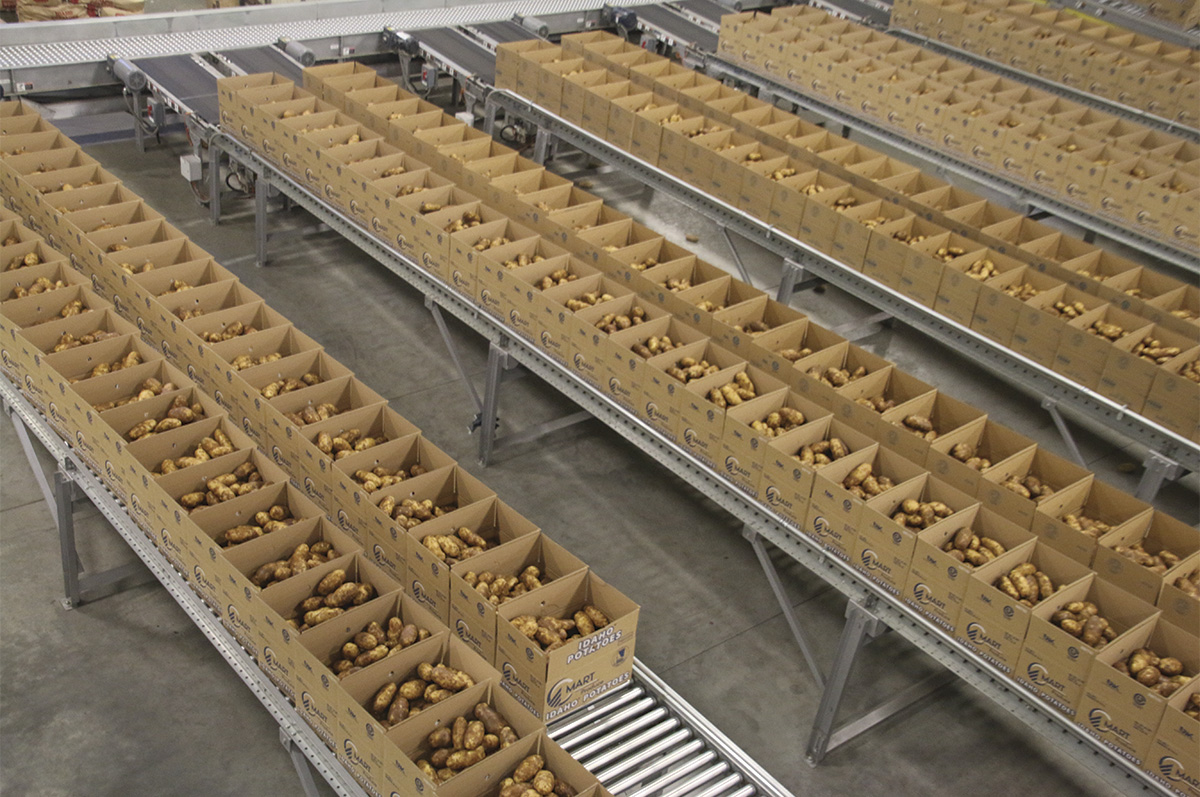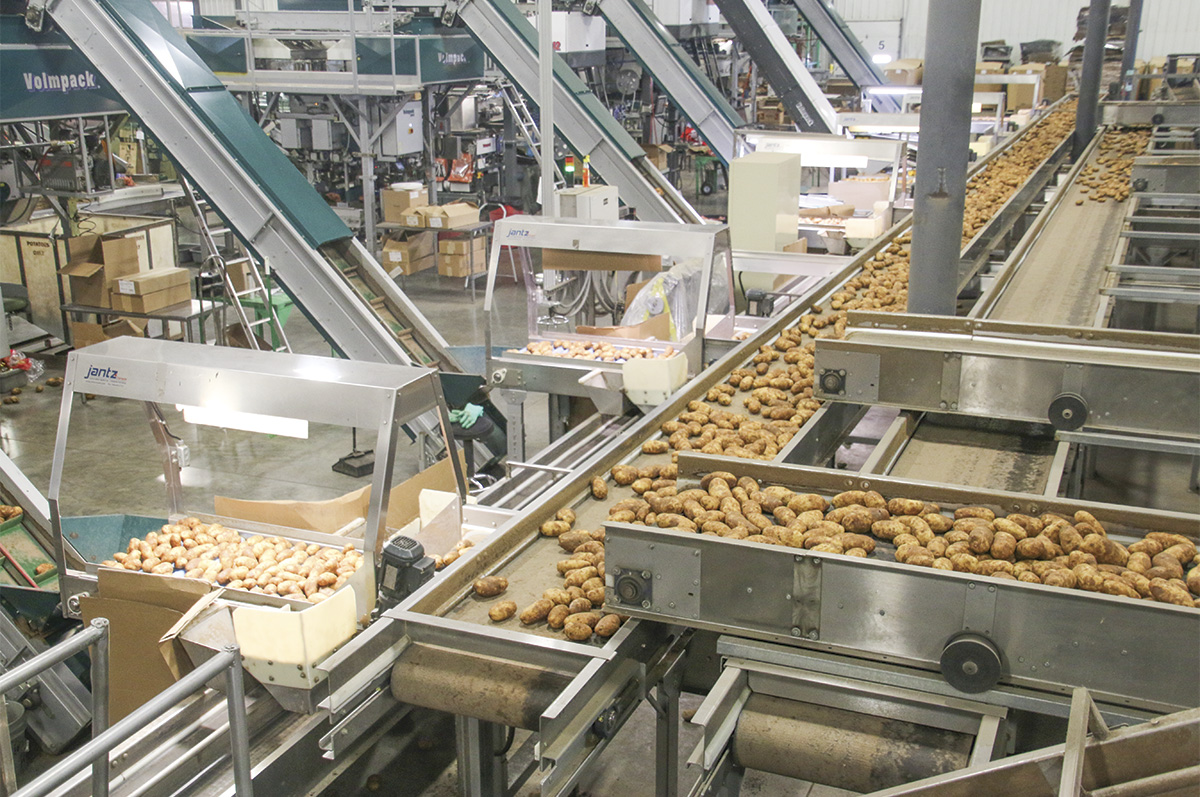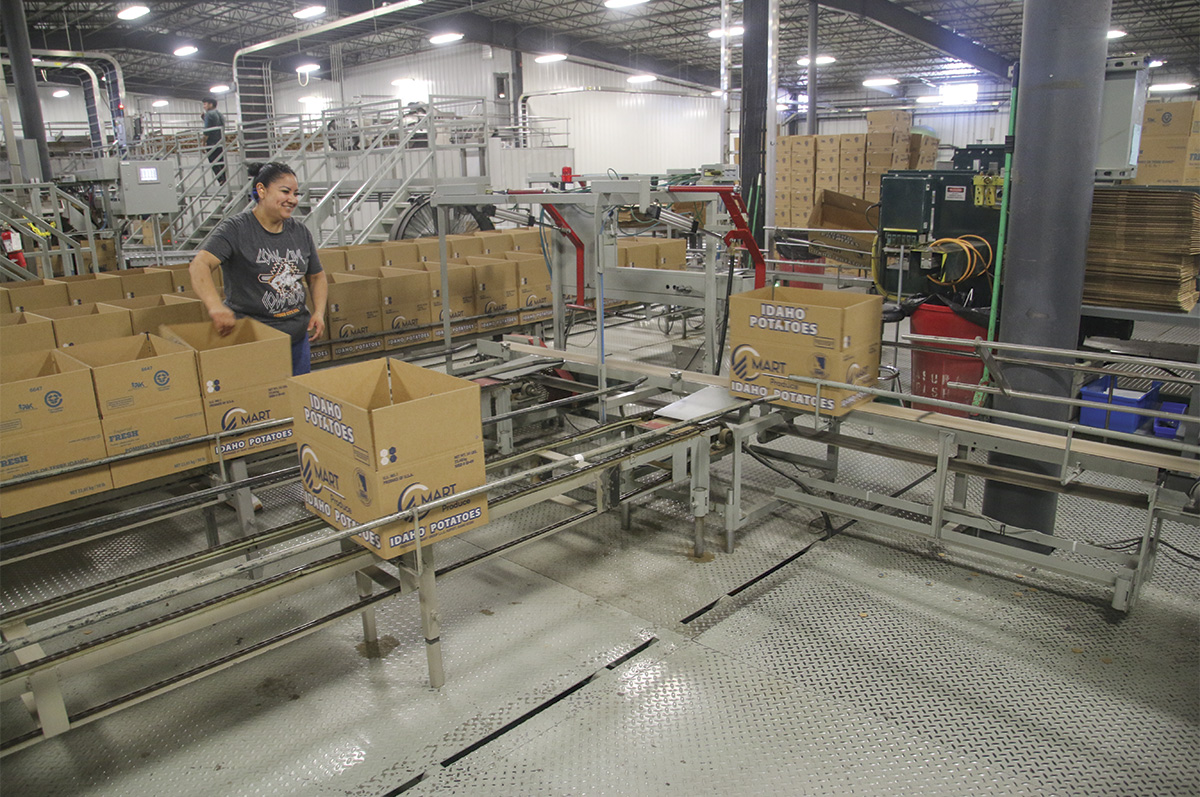The Snake River Plain has been farmed for just over 100 years, and with each generation, the business of farming has become more complex. Each generation, however, has had to wrestle with the same question: How do we preserve the individual farm legacy while preparing the farm for future generations? It was this question that brought 10 potato farmers together in the late ’70s and early ’80s to attempt to operate a fresh-pack potato shed together. And it was this question that also made the group realize they didn’t align together well.
When all was said and done after several years, there was one individual left standing among the group – John Hansen – who still thought the concept could work. Hansen and another of the original farmers – Jack Duncan – decided to team up, and through the ’80s they built Mart Produce in Rupert, a fresh-pack shed, while each farm continued operating separately.
Company development
The Hansen-Duncan partnership continued into the 2000s. They grew their market share and refined their processes. As their markets grew, they brought in outside suppliers to help meet the demand for product. In 2013, the new fresh-pack shed was completed and brought online, and by that point the next generations, Paul Duncan (Jack’s son) and Gary Hansen (John’s son), were running the show. Each farm operated and marketed potatoes separately while using the shared facilities.
In 2012, the partnership brought Jentzsch-Kearl Farms into ownership, and in 2014, Grant 4-D Farms came in. With four family farms having ownership, Mart Produce began to expand and combined marketing efforts in 2014, whereby any potato that went to the fresh market, the frozen-processed market or dehydration markets from these farms came under one umbrella.
In 2018, the board of directors expanded from the four farming family representatives to also include four industry business professionals. “At that time, not only were these family farms expanding, but our other suppliers wanted more stability in the markets too,” says Mike Larsen, marketing specialist for Mart Produce. “So, Mart Produce bought a small potato dehydration plant and a small frozen-processed potato plant. This allowed the company to take some process-grade potatoes directly to the frozen plant [Mart Frozen Foods] and more of the ‘wash-out’ potatoes to the dehydration plant [Mart Processing Solutions].”

The fresh-pack shed at Mart Produce can gear up to load 30 semitrucks in a day, as required. Each truck hauls between 800-840 units. Each unit is a 50-pound box or bag of potatoes. Photo by Lynn Jaynes.
“With increased options, business gets complicated fast and there are a lot of moving parts,” Larsen says, “but the expansion also gives us more options – more control in the marketplace. Expanding the board at that point brought in some business professionals who offered important help in negotiating those business decisions.”
“And potato production continues to grow because demand is strong internationally – people like their french fries,” Larsen says. “The fresh russet demand is declining, but the french fry demand globally shows potatoes are good business. So we have to look at how we shape that business to meet the opportunity.”
Today, Mart Produce (rebranded The Mart Group to encompass all business entities) targets one-third of its potato marketing through the fresh market, with two-thirds going to the fry market. “Contract security is good on the processing side, but we also want some flexibility in the fresh market option,” Larsen says.
Challenges
While the 30,000-foot view of Mart Produce seems pretty smooth, the challenges these farms have had to overcome are more apparent with a closer look. Farmers are (perhaps notoriously) independent, so combining efforts in any respect comes with some jostling and negotiation. “We tried, for instance, sharing equipment or things like that between the farms,” Larsen says, “and sometimes it worked, but a lot of times it doesn’t because the way one farmer maintains his equipment, for instance, is different than the way someone else does – and no farmer wants to give on that point.”
Other things they tried to coordinate as a company that didn’t work well included using each other’s potato cellars. “Between these farms there are cellars throughout the valley where it might be more convenient to the harvest operations to exchange use of cellars closer to your current field rather than crossing counties to get to your own cellar,” Larsen says. “But it’s the same issue – not everybody stores potatoes the same and some like to do things one way, so it doesn’t work to everyone’s satisfaction.”
One thing they can all agree on is continually incentivizing quality to growers. “The market wants quality,” Larsen says. “We want to create outlets and options for any product that doesn’t hit that quality mark, but hitting the quality mark is what we’re focused on, and the group works together to find those solutions.”

Potatoes are trucked to the shed from storage cellars, unloaded, run through a rock trap, washed, optically sorted and sized by machine, and graded both optically and visually before being bagged or boxed. Photo by Lynn Jaynes.
Marketing that famous Idaho potato
The process for a fresh-pack shed is fairly simple: Potatoes are brought into the shed on a truck, unloaded and run through a rock trap. They’re then washed and go through an optical sorting and sizing machine. Then they are graded and put in boxes or bags and shipped back out again.
“The barrier to entry in the fresh market is not that hard,” Larsen says, “so that’s why there are so many fresh sheds out there – but they have been consolidating, and we think they’ll continue to consolidate somewhat.” Nearly every shed in Idaho is owned by the farmers who grow the potatoes. The logistics of putting a fresh-pack shed together may be attainable for many farms, but marketing the product has greater challenges.
“The fresh market is still a pretty open market, but it’s more volatile,” Larsen says. “And 2021 and 2022 were the most undersupplied crop years that even old-timers could remember – for fresh, frozen, everything. We’ve actually gone through two pretty short market cycles since 2020, cycling from an undersupplied frantic market to an oversupplied flooded market. Idaho, which supplies about 40 percent of the nation’s fresh-pack supply, has a great ability to flood the market – we’re a big player in that market. So trying to figure out how to market your potatoes without crashing the market is one of the marketing challenges.”
“It’s easier on the processed market side to control supply,” Larsen says, “because for fried potatoes, if they’re short they can dip into the fresh market for extra supplies. But the reverse isn’t true. You store potatoes destined for the fresh or frozen markets at different temperatures, and fresh potatoes are sold on visual appeal, so it’s harder to take a fry potato which may have started to sprout later in the season or maybe has a dark end but still works for the fry market and put that into the fresh market.”

Although the automated system in a packing shed is efficient and refines processes, it’s the people who make the process run smoothly. Photo by Lynn Jaynes.
The future
The idea of being independent and wanting to move individual farm legacies forward, and yet combine efforts for marketing, is pretty much where production ag is across the country. Farmers know that to survive and compete in a consolidating global environment, they need to find ways of working together.
“All four family farmowners are powerful, driven individuals, so there’s regular lively discussions and board meetings,” Larsen says, “but we’re constantly challenging each other. I would say all four farms strongly believe they are better off together.”
At Mart Produce, each of the four farming families is still independently carrying on their family and farming legacies, as they see fit. That’s the strength of individualism in agriculture, but by marketing together they’ve ensured a continuing viability for future generations.




.jpg?t=1687979285&width=640)



